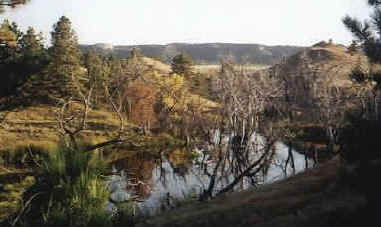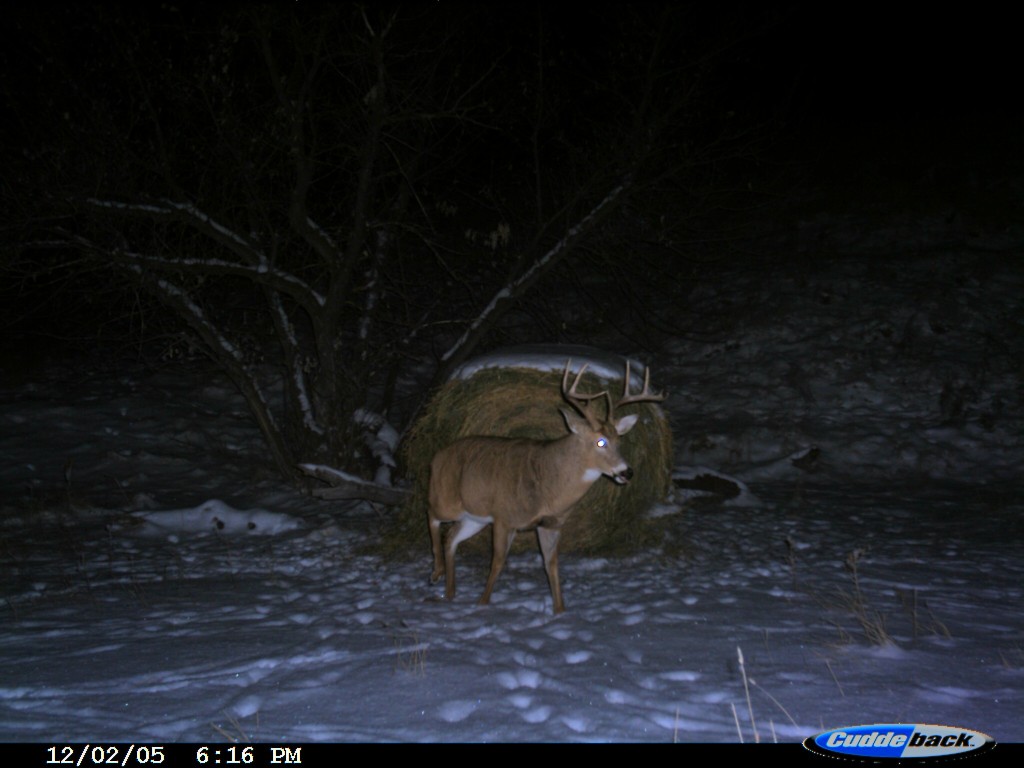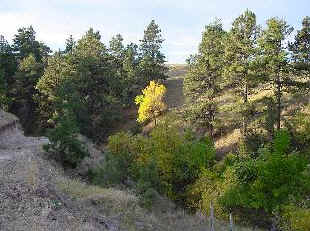Forest Management
Ponderosa Pine is the predominant upland forest type on the Ranch. Several criteria were considered before a contract was signed with a logging company. We understood from an ecological standpoint that an unmanaged forest was not a healthy forest. Logging, if done correctly, is an excellent tool that helps us achieve our objectives: (1) Forest health, (2) Reduced fire danger, (3) Wildlife, (4) Aesthetics, (5) Improved grazing opportunity.
Logging as a tool in a forest is similar to hunting as a tool for wildlife. The alternatives to these tools are disease, starvation, stand replacing fires and predation.
A first entry logging operation was completed on the Ranch in September of 2000. It is our opinion that many of the Ranch objectives will be achieved with this operation. We are now in the process of small after-harvest thinning operations to better meet our forest objectives. An additional 9000 bd. ft. of timber was removed from the Ranch in early 2005 to better meet our fuels and wildlife goals.
Rangeland Management
Proper rangeland management is critical to a healthy, vigorous and productive native grass stand. Good grassland management begins with a good cattle rotational grazing system. All Great Plains prairie grass systems developed under large grazing animals (buffalo and elk), and fire. Although fire can be excellent as a rangeland improvement tool, it is sometimes difficult to manage and not always socially accepted. Cattle on the other hand do a very nice job replacing the once large herds of buffalo and elk.
To properly manage a rangeland system with cattle, we have to graze pastures at different times during the growing season and at different times during subsequent years. This is called a planned rotational grazing system. Planned grazing systems also allow nesting birds to be undisturbed in ungrazed pastures. Antelope Creek Ranch incorporates five pastures in a planned grazing system, which does include special grazing use of riparian areas.
Riparian Area Management
 Riparian areas, also known as streams, creeks and drainage’s, are very sensitive and require special management. Although these areas are quite sensitive to cattle grazing, logging and cropping, they can be the most productive areas on the Ranch. Increased moisture conditions contribute to very productive grasses and hardwood tree growth and regeneration. Allowing cattle unlimited access to streams and creeks can very quickly degrade stream banks causing erosion and loss of fish and aquatic habitat. Increased sediment loads to the stream can also contribute to aquatic degradation. Cattle grazing these riparian areas at the wrong time of the year can also severely limit the regeneration of hardwood trees, like green ash and cottonwoods.
Riparian areas, also known as streams, creeks and drainage’s, are very sensitive and require special management. Although these areas are quite sensitive to cattle grazing, logging and cropping, they can be the most productive areas on the Ranch. Increased moisture conditions contribute to very productive grasses and hardwood tree growth and regeneration. Allowing cattle unlimited access to streams and creeks can very quickly degrade stream banks causing erosion and loss of fish and aquatic habitat. Increased sediment loads to the stream can also contribute to aquatic degradation. Cattle grazing these riparian areas at the wrong time of the year can also severely limit the regeneration of hardwood trees, like green ash and cottonwoods.
Our management system for riparian areas is quite simple but did require barb wire fencing on both sides of the creek. We did not fence the creek to exclude livestock entirely, small water gaps were provided to allow cattle access to portions of the stream for watering. We have also learned that grazing cattle in riparian areas at the right time and intensity can be very beneficial to native creek bottom vegetation. We have been planting trees beneficial to wildlife up and down the creek bottoms for several years now. These trees include aspen, bur oak and a variety of apple and cherry trees. Do to limited livestock access to the riparian areas, we have noticed a definite increase in the wild turkey population, mule deer and whitetail fawn recruitment, fox squirrels and bird life.
Wildlife Management
 Wildlife resources are very important to the overall health, balance and financial operations at Antelope Creek Ranch. Just about all of the day to day decisions made on the Ranch take into consideration the wildlife resource.
Wildlife resources are very important to the overall health, balance and financial operations at Antelope Creek Ranch. Just about all of the day to day decisions made on the Ranch take into consideration the wildlife resource.
Primary consideration is given to mule deer, whitetail deer, wild turkeys and sharptail grouse. Food plots of turnips, triticale and oats are planted annually to compliment the already existing alfalfa fields and native pasture. Approximately 12000 trees have been planted since 1993 which provide food, cover and travel lanes to and from different habitat types. Because of riparian management, forest management, rangeland management, tree plantings and food plots, Antelope Creek Ranch is home to healthy wildlife populations.

